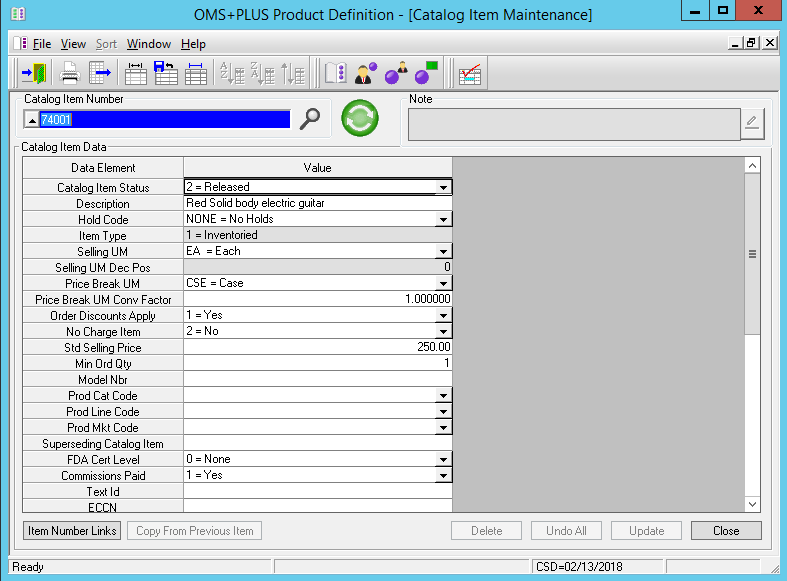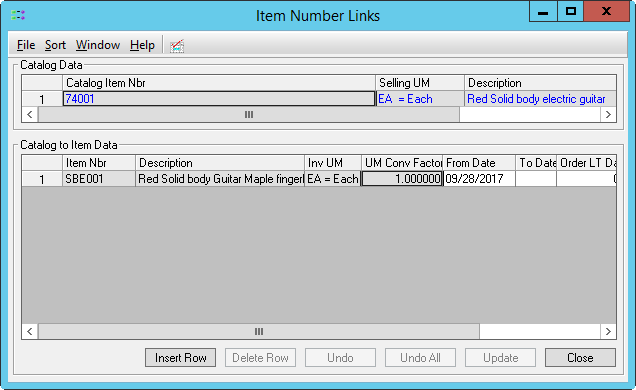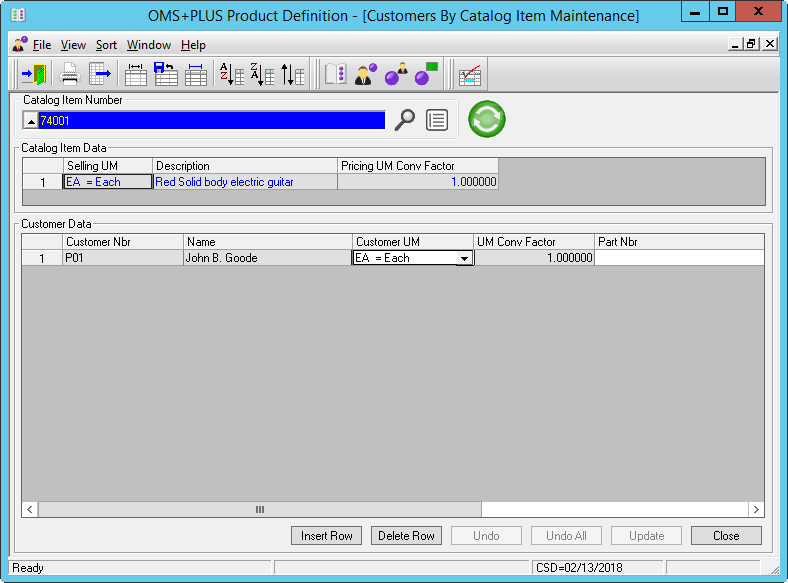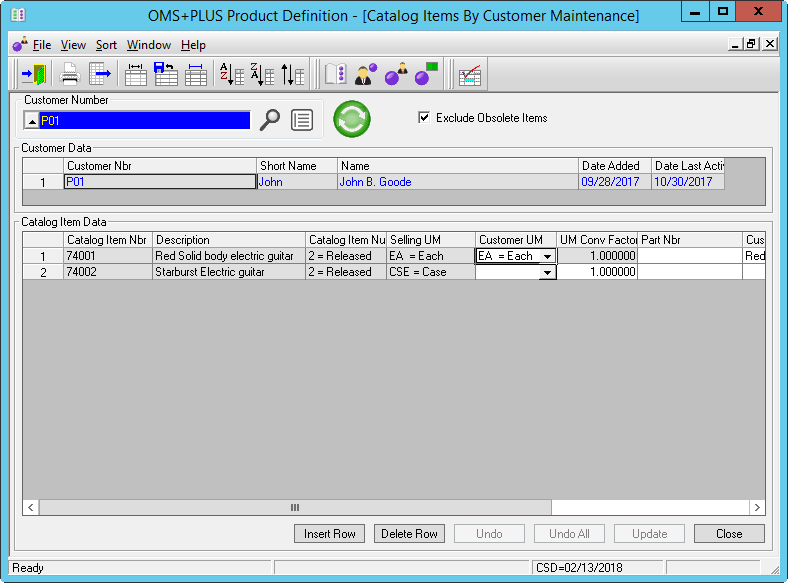The OMS Product Definition Module consists of three functions. First, catalog items are defined. Second, a catalog item is linked to a production item number. Third, a catalog item is linked to a customer. The catalog item number is used by the customer to order your products. The catalog item number does not need to change since it may be linked to a different production item number or superseded. This feature enables you to present a common face to your customer.

Extensive descriptive and control data are maintained for each catalog item. Several of these descriptive data elements require some additional explanation.
The ECCN Number is the Export Control Classification Number used in the Commerce Control List to identify items for export control purposes.
The Harmonization Number is required if you ship products internationally. Each product you ship is a code number that complies with the HS (Harmonized System) standard. This code number must appear on the invoice.
The superseding catalog item number is entered when there is a replacement for this catalog item
Significant control data include the minimum order quantity, standard selling price, status, and commissions paid, and no charge item. The minimum order quantity is used by the Order Entry System (OMS+PLUS/OE) to warn you if you are accepting an order below the minimum.
The standard selling price is the default value for pricing if no other pricing data is present.
The commissions paid data element enables you to control whether commissions are allowed.
The no-charge data element is used by the Order Entry System ( OMS+PLUS/OE) to determine if a zero price is allowed.
Maintenance is simplified with a convenient Copy From button. This feature is extremely helpful when entering groups of similar parts.

The Item Number Links window is used to associate catalog item numbers with production item numbers. The link is considered valid based on the from-date and to-date. This feature is extremely helpful when there is a change to the production product that effects form, fit and function yet does not concern the customer. If for example a colorant was used that is no longer acceptable because it is now a known carcinogen. This change would require a new production item number since the change violates form, fit and functionality interchangeability rules. The replacement item number, with an approved colorant, would be linked to the catalog item number. The customer would order the same catalog item but the system would schedule and ship the replacement production item number.

The Catalog Items by Customer Maintenance window is used to link customers to catalog items. This linkage may either be created using this window or as a byproduct of the order entry process. This query is especially helpful since it displays all the catalog items you have sold to a customer.

The Customers by Catalog Item Maintenance window displays all the customers that have purchased a given catalog item. This query is especially helpful if there is a problem with a catalog item. This linkage may either be created using this window or as a by-product of the order entry process.